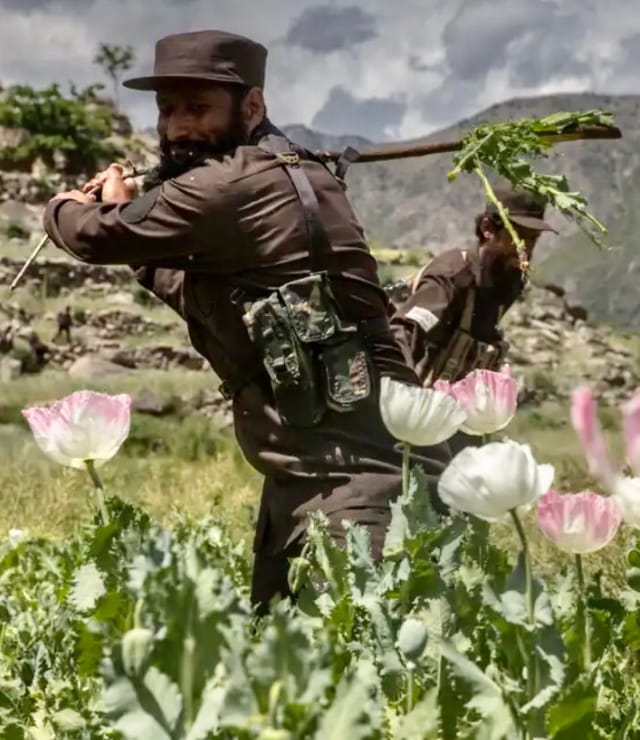HMS Wager, USS Indianapolis, and the Tall Poppy Syndrome

"Government's first duty is to protect the people, not run their lives." ~ Ronald Reagan, 40th president of the US
"Government's first duty is to protect the people, not "ruin" their lives." ~ Doug Garland, Author
David Grann's The Wager: A Tale of Shipwreck, Mutiny and Murder is masterful storytelling of the Wager's hunt for a treasure-filled Spanish ship in the 1740s. The vessel becomes separated from its group and eventually wrecks on an isolated island off the coast of Patagonia while rounding Cape Horn.
Starvation, physical and mental illness, emotional squalls with cross currents full of bad envy and hubris, deaths, anarchy, mutiny, and murder follow. The mutineers depart in a makeshift vessel and 30 survivors astonishingly arrive in Brazil. Another improvised vessel carries the captain and two others into Chile.
Both groups eventually returned to England. But there were dueling narratives to the tale. Who were the Tall Poppies, and who was tall poppied? A board of inquiries and trial by court-martial ensued.
The trial was a farce—no adjudication, punishment, retribution, or schadenfreude. The court was placed in a political predicament. Judging these men and their circumstances put the British Empire on trial and what it stood for - so-called "bringing civilization to the uncivilized world." These men were not more honorable than the civilizations they were trying to civilize.
Governments are made up of individuals and individuals often revert to flight or fright - bad behavior better known as protecting their rear (admirals) - see, Anti-Semitism (& Government) as Cutter(s) in the Tall Poppy Syndrome -The Albert Dreyfus Affair.
The story reminded me in many ways of the plight of the USS Indianapolis and its Captain, Charles McVay. I am enclosing the section from my book The Tall Poppy Syndrome: The Joy of Cutting Others Down that details the event.
Charles Butler McVay III was born into a navy family on August 31, 1898, in Ephrata, Pennsylvania. His father would be an admiral in the US Navy during WWI and the commander in chief of the Asiatic Fleet in the early 1930s. Young McVay was appointed to the US Naval Academy by President Woodrow Wilson and graduated in 1920.
From 1936 until 1944, McVay rose through the ranks, garnering his first command aboard the flagship USS Luxon in 1938. Over time, he also served as a naval aide on the staff of the US High Commissioner, Manila, Philippine Islands; the commander of the USS Kaweah; and the executive officer of the USS Cleveland, where he earned the Silver Star Medal “for conspicuous gallantry and intrepidity.” In 1944 he took command of the USS Indianapolis.
The Indianapolis was a jewel in the American fleet. President Roosevelt had used her for personal transport across the Atlantic on occasion. She had already seen action during WWII, and her previous commander, Admiral Raymond Spruance, would eventually succeed Fleet Admiral Chester Nimitz as the commander in chief of the US Pacific Fleet and Pacific Ocean Areas.
With McVay at the helm, the Indianapolis fought in the Battle of Iwo Jima from February 19 to March 26, 1945, then moved to the Battle of Okinawa. For seven days, they pounded the beaches with eight-inch guns, shot down six planes, and damaged two others. Then a kamikaze pilot dropped a bomb on the deck that blew two gigantic ruptures in the hull and killed nine crewmen.
McVay and his crew closed off compartments, sought temporary repairs from a salvage ship, then sailed six thousand miles to Mare Island Naval Shipyard in California. The Indianapolis underwent a major overhaul including the latest communications and radar equipment, but not sonar.
The War Department secretly chose the Indianapolis as an ideal ship to transport the components of two atomic bombs to an air force base in the Mariana Islands, fifteen hundred miles south of Tokyo, where they would be assembled and prepared for detonation. On the way, the Indianapolis reached Pearl Harbor in just 74.5 hours, a record that still stands. She arrived at Tinian shortly after that and completed her mission.
Next the navy ordered the ship to reach Guam “with due haste” for new orders and supplies. From there they were to push onward to the Philippines for two weeks of combat training before heading back to Okinawa. Their instructions were to sail a straight line at an average speed of 15.7 knots and zigzag at the discretion of the commanding officer.
Zigzagging
US submarines sank more than four thousand ships in WWII, and most of the ships were zigzagging. The maneuver may have caused an initial miss, but the chance of a miss during a second launch was minimal. Zigzagging is most effective after torpedoes are launched but not necessarily as a preventive measure.
The Indianapolis should have had an escort with a sonar, a routine procedure for all ships without one. Although the routing master knew Japanese submarines were patrolling the area and had tried to sink a destroyer and an American cargo ship the day before, he denied McVay’s escort request and implied the waters were safe. Unbeknownst to McVay, Lieutenant Commander Mochitsura Hashimoto had placed his submarine in the middle of the busy shipping lanes between Guam and the Philippines.
Three days out and on a night with limited visibility, McVay made his last rounds. The humidity warmed the ship in spite of the cloud cover, and some of the sailors wanted to sleep on deck and leave the hatches and doors open to allow the nighttime air to drift inside. McVay granted their request.
Zigzagging the ship was at his discretion, especially at night in poor visibility because enemies cannot see well through the periscopes in the dark. McVay stopped the zigzag antisubmarine pattern and continued at full speed.
At midnight on July 30, Hashimoto sent six torpedoes toward the Indianapolis. One hit the starboard hull; water rushed in through the ship’s openings and flooded the fore of the ship. A second torpedo hit the right side, where the aviation fuel exploded. Hundreds of men died instantly. The ship sent an SOS immediately but no further messages since fire cut off the electricity. To McVay the initial damage did not appear as severe as the destruction of the Okinawa bombing, but within fifteen minutes, the ship had listed 60 degrees.
He gave the order to abandon ship. Because the intercom could not function without electricity, a bugler handled the assignment, but word spread mostly man-to-man. Sailors rushed to get into the water early and swim away from the ship to avoid being sucked down with her. In the panic, some jumped in without life jackets.
The vessel had rolled toward the thirty-five life rafts, and only twelve were accessible. Of the 1,196 crewmen, nearly nine hundred made it into the sea. McVay scored a raft, but most sailors were in the water, some floating in groups. Men drowned fighting for life vests.
Surely someone would have heard their SOS or a rescue crew would come in the morning when they did not arrive at port. But no one was coming, as a series of incidents contributed to the fate of the men struggling for their lives:
- Three stations received the SOS signal, but none acted on it: one operator thought it was a Japanese trap, one commander had left orders not to be awakened, and one recipient was drunk. (The navy would deny knowing the SOS came in, but this information became public much later when the records were declassified.)
- Departing ship positions at Guam were based on predictions, not reports, and her name was simply removed from the board on the day she was to arrive at the next port.
- At Leyte, their destination, the officer tracking the Indianapolis knew she did not arrive on time but did not investigate or report this to his superiors. He later received a reprimand, and his superior, a letter of admonition.
- The headquarters of the Commander Philippine Sea Frontier recorded the Indianapolis had arrived. The acting commander received a letter of reprimand.
- Directives did not include reporting the nonarrival of a combat ship, and the Movement Report System that tracks all navy ships made no report that the Indianapolis was overdue. They had received a garbled message regarding arrival time, but no one requested clarification.
Hundreds of sharks attacked the men in the water within twelve hours. Planes flew over several times but failed to detect the survivors. By the fourth day, two-thirds of them were dead. Some committed suicide by slipping out of the same vests they had fought for.
Midmorning on August 2, the navigation antenna worked loose on a PV-1 Ventura patrol bomber searching for submarines. When the pilot crawled through the fuselage to repair it, he noted an oil slick on the water below. The crew circled the plane, saw the men, and dropped a life raft and radio transmitter. The pilot notified his base.
All surface and air units capable of rescue raced toward the survivors. By midafternoon an amphibious aircraft landed in the shark-infested waters, and the crew rescued fifty-six men before nightfall. The sea turned stormy, putting the plane and the men in jeopardy, but a destroyer arrived to save the day. McVay witnessed the activity, but he and his group were too far away. The rescuers did not see them and left the area in the morning.
Around noon a search plane’s radar picked up an empty ammunition can in McVay’s raft, and the crew called it in. McVay and his group had survived 4.5 days without water. Only three officers survived.
In total 321 crewmen had miraculously survived in the water. The others died of shark attacks, exposure, salt poisoning, dehydration, or suicide. Four more sailors died shortly after their rescue. By then 879 men lost.
The public wanted answers. The easiest, quickest solution was for the navy to blame the ship’s captain, a tradition as old as seafaring itself. This spared a lengthy investigation into navy personnel, departments, and higher-ranking officials as the war was winding down. Aeschylus said, “The first casualty of war is truth,” but truth can also be the last casualty. Within a week, McVay was in Guam to face a navy court of inquiry about the sinking of the Indianapolis and his delay in reporting the loss of the ship.
Chief of Naval Operations Admiral Ernest King aggressively pursued McVay’s court-martial as his primary cutter. King had a reputation for holding grudges, being argumentative, and being “WWII’s saltiest sea dog.” McVay’s father had once placed a well-deserved letter of reprimand in his record. Although King may have had a grudge with his former admiral, he achieved payback through McVay’s court-martial, concealing the navy’s ineptitude and possibly his own at the same time.
The court of inquiry began August 13, two days before Japan surrendered, and concluded with a recommendation that the navy court-martial McVay. Fleet Admiral Nimitz and Admiral Spruance disagreed. They presented their arguments in writing to the judge advocate general and suggested a letter of reprimand instead of a court-martial because an error in judgment was not gross negligence and merited a slap on the wrist, not a career-ending punishment. Nimitz also pointed out McVay’s orders gave him discretion over zigzagging and abandonment could only have been announced by word of mouth in this case.
Admiral King and Secretary of the Navy James Forrestal disagreed with them and approved a formal court-martial, even though the inspector general had not filed a formal report. Four days before the trial, the navy decided on the charges: violating the standard navy tactic of zigzagging and failure to order the crew to abandon ship promptly.
With only four days to prepare his defense, McVay asked for a delay of trial, but King denied it. He also refused McVay’s choice of counsel and selected for him an attorney with no trial experience.
The court was prudent not to ask why nine hundred sailors were left to float for nearly five days. Nor would they mention they had withheld information from McVay about the submarines in his path. The conduct of the navy was not going to be on trial but McVay.
Hashimoto testified visibility had been fair and he would have sunk the ship even if it had been zigzagging. Naval experts testified zigzagging provided negligible benefits. Despite their testimonies, McVay was the first officer in US Navy history to be court-martialed for losing a ship to an act of war.
The court found him guilty of failing to zigzag but not of failing to abandon ship in a timely manner. They disregarded additional testimonies and ruled the visibility at the time of the attack had been good. They demoted McVay one hundred points in his permanent and temporary ranks.
Given his outstanding service, his sentence was remitted and he was restored to full duty. But the loss of ranking points hindered promotions and effectively ended his career. His service record reflected his conviction, and others viewed him as a felon. His name was associated with losing the Fifth Fleet’s flagship and nearly two-thirds of her crew—the greatest naval at-sea tragedy ever.
McVay never recovered from survivor’s guilt. He contacted every family of the crewmen who had sooner or later died from the disaster. Most were comforted to have disclosure. A few relatives were not and every Christmas sent vicious cards or made callous phone calls to him.
He served his final years as the chief of staff of the Eighth Naval District, New Orleans, Louisiana, where he retired in 1949. His combat record allowed him to be “tombstone promoted” to rear admiral upon retirement, but he preferred to be called captain the remainder of his life. He retired to a small farm in Litchfield, Connecticut.
McVay’s wife, Louise, died of lung cancer in 1961. Although he remarried, he remained depressed, broken, and lonely. On November 6, 1968, he dressed in his navy uniform—a keychain with his boyhood good luck charm of a toy sailor in one hand and a.38-caliber revolver in the other—and killed himself on his porch.
Many spent years attempting to exonerate him. Fifty years later, twelve-year-old Floridian Scott Hunter (tall poppy) conducted interviews of nearly 150 Indianapolis survivors and examined eight hundred documents for his school’s National History Day program. He testified before Congress, who then passed a resolution exonerating McVay. President Clinton signed it in 2011. Afterward, Secretary of the Navy Gordon England ordered the removal of all wrongdoing from McVay’s official navy record.
If you have never seen the storyline from Jaws when Quint (Robert Shaw) describes the attack and sinking of the Indianapolis, it is worth watching (https://www.youtube.com/watch?v=xO60RohuARY).
Tall Poppy Syndrome Newsletter
Join the newsletter to receive the latest updates in your inbox.



